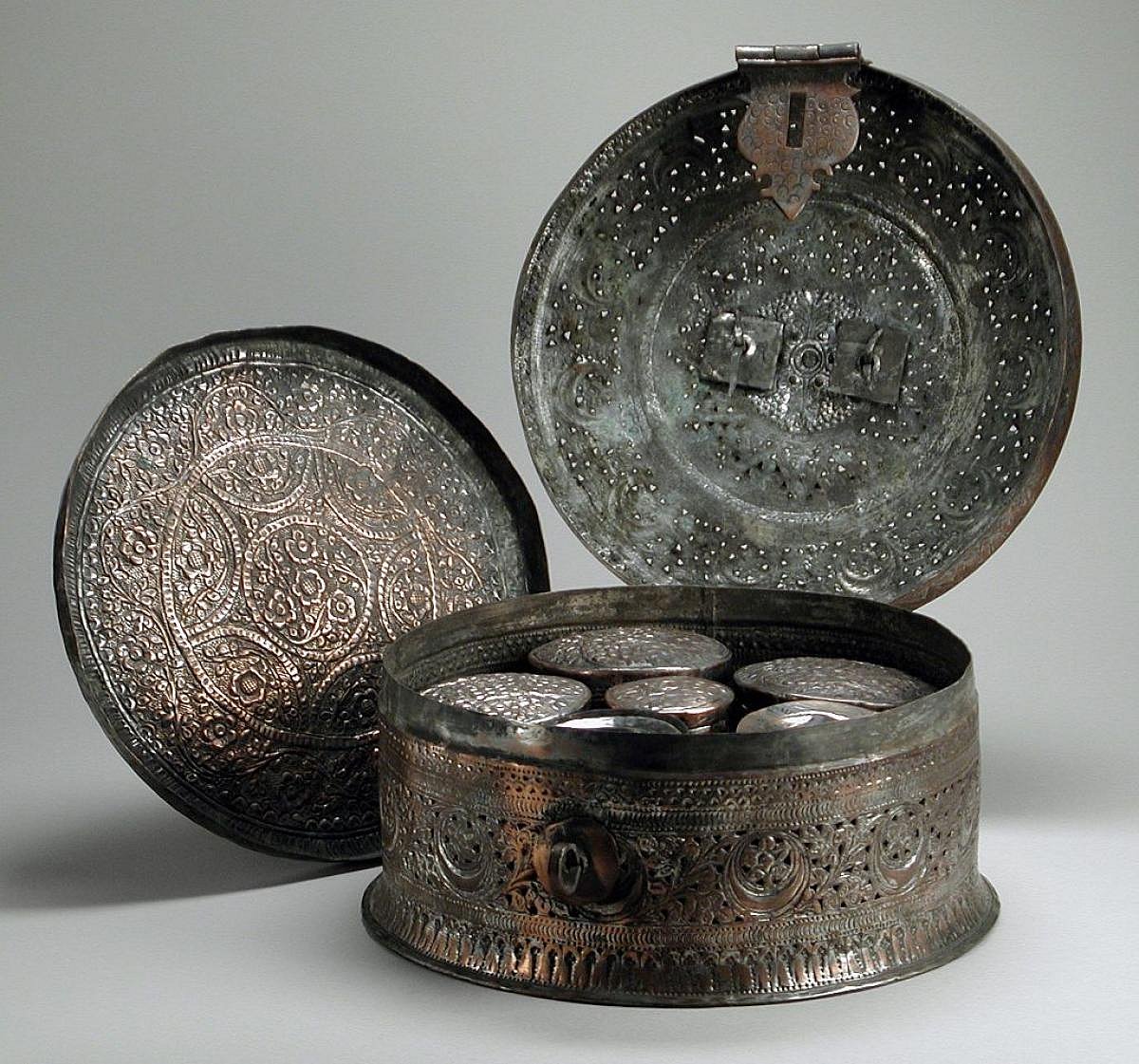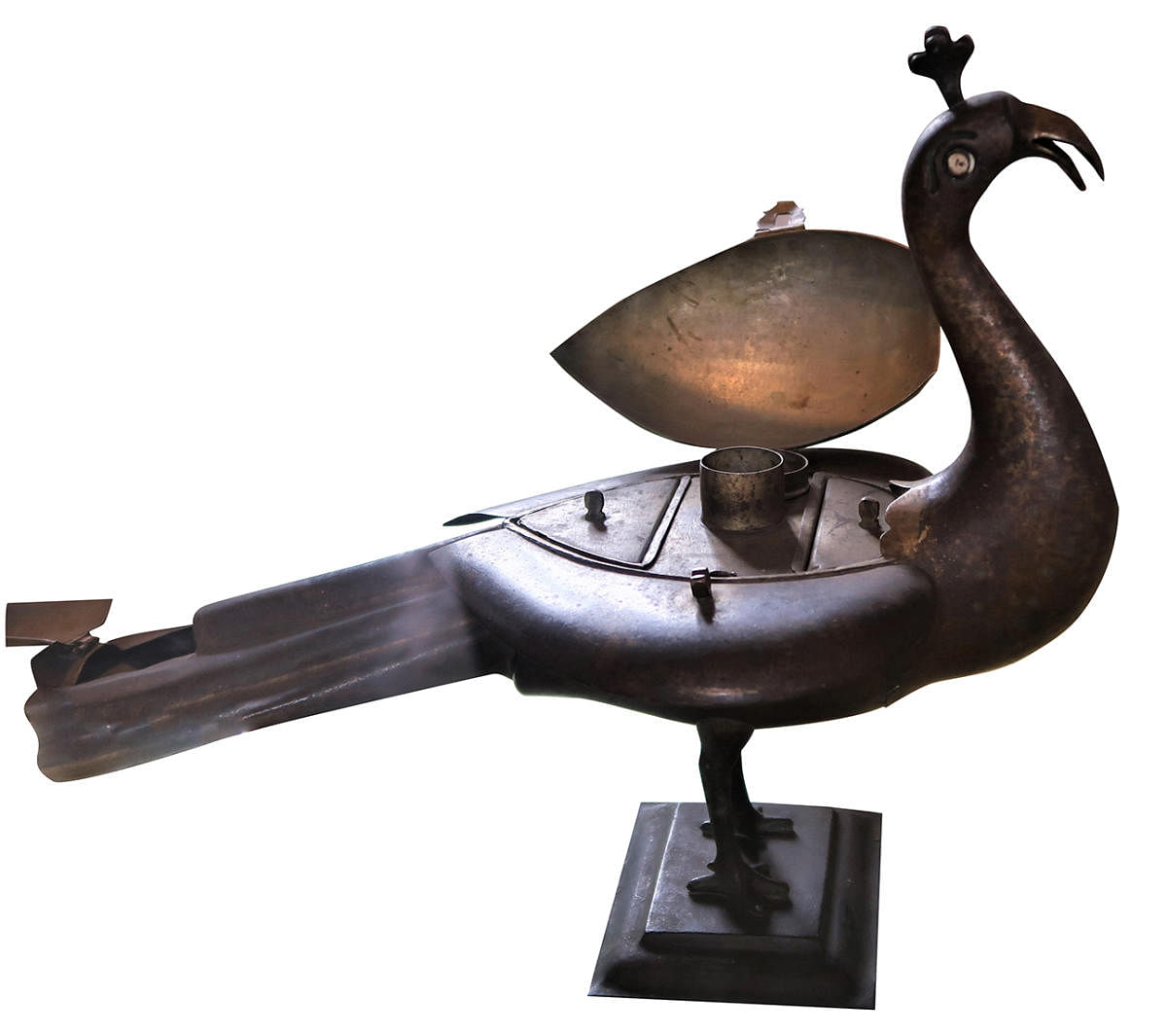

One of my earliest memories of the paan dan was at my grandmother’s place. Tucked alongside the pillows of her colonial bed, it was a favourite possession that she got as part of her wedding gift from her grandmother-in-law. Exquisite in its appearance, the paan dan wasn’t just a family heirloom that had seen at least three generations of strong women in our family, it was also one of those rare vintage pieces and the most outstanding showmanship of Odisha filigree work. But that was not the only thing that attracted me to this double-storey paan box that had these little ceramic bowls for condiments, it was how much of her world was into it. The box, with all its little compartments, some hidden under the fine tapestry screen, were little crevices that could hide anything from money, jewellery to important letters, hand-painted portraits, and of course my granny’s favourite set of Ganjifa cards.
The fascinating bit about the paan dan design was that no matter what the size, all were equally multifunctional. In fact, the portable version of the paan dan — a rather plain Jane tiffin box or fish-shaped iteration — could rival the purse of today with how much it could take. That explained why the paan dan, which originally began as a privy of the rich and famous quickly became a favourite of the commoners too, especially women folk who used it as their own treasure chest and took a keen interest in its design. My maternal grandmother, who loved her paan dan for its multifunctionality, designed hers as a musical box with three layers, each level housing an interesting assortment of things that could make paan or mukhwas for the guests of any age and taste. In fact, one of my nani’s paan dan was the centrepiece of the living room area where people would gather around post a meal — with interesting digestive treats coming off the box.
Curiously, it wasn’t just my grandmothers or their peers who fell for the charm of the paan dan, it was a pan-Indian phenomenon. Every culture had a special place for the paan dan — which in ancestry (and association) is perhaps as significant and integral to our social fabric as paan itself — not however for the same reason. While it is true that the betel leaf, back in time, was an extremely valuable ingredient — reams have been written about paan kharch where queens and their significance in the royal harem was calculated based on the quota of paan each of them had, a tradition said to have started by Empress Nur Jahan — the popularity of the paan dan, an entrapment designed to facilitate the habit and make it more indulgent, was not. Paan dan, with its elaborate design and craftsmanship, was always meant to wow and was one of the finest tools of power and diplomacy used to establish a sense of hierarchy or rule. In the Mughal harem in fact, it was the privy of the Padshah Begum who used it to store not just the paan, chuna, katha, laung, saunf, gulab and elaichi but would use it as the proverbial “Ottoman ring” to rule the harem with an iron fist. It was the finest showcase of taste, hospitality and of power. Down the ranks, however, the paan dan took a more meaningful role, where it would be this little box of treat that would work at creating a bond between the women of the house.
Often the privy of the eldest in the family, this little paan dan would be the proverbial icebreaker for a newlywed when she would make a paan for the elders as a test of her skills, or when the otherwise spirited sasu ma would make one for the nayi bahu and give it to her first for digesting a meal and then as something that would keep her mouth occupied while she went about the home chores without the feeling to nosh. Or, the time when she would ask her to break a few areca nuts and make the chuna and katha to replenish the box that should always be ready to “serve and show”. In fact, many old-timers talk of a time when it was the paan dan that not only gave them their love for paan (zarda wala included) but also forged a bond with their second mothers for life. Such was the level of connection with this little box that played the silent confidant of many heartfelt conversations. In many cultures, it is the proverbial “ghar ki chaabi” that is passed from one generation of homemaker to the next. And in doing so, each generation doesn’t just pass on a traditional habit — eating paan has always been considered a good habit even by Kamasutra and is the secret to becoming the ideal homemaker, who has her own quirkiness, favourites and a unique way to live life.